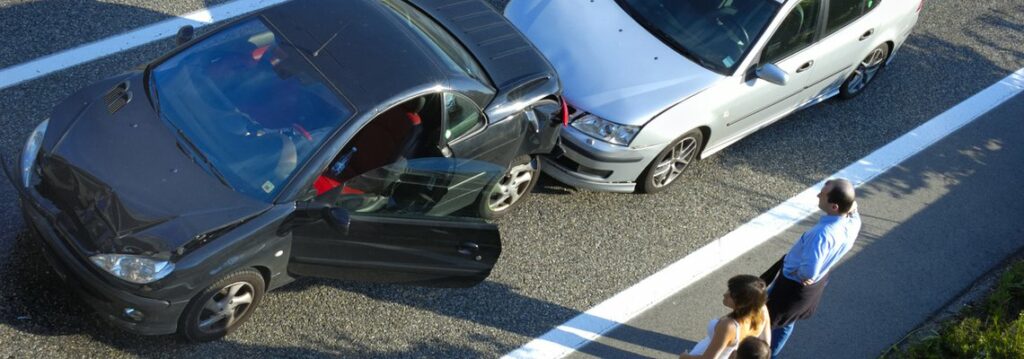You may have heard if you get into a car accident you should take as many photos as you can. This is almost always a good idea, so long as the photographs can be taken safely. Although police officers who respond to the scene of a car crash will sometimes take pictures (depending on the severity of the collision and reported injuries), this is not always the case. Consequently, in order to help prove your case in terms of how the accident happened and what injuries you suffered, taking accident scene photographs is critically important.
Will the Police Take Photos?
When the police are called to the scene, they will document in the Traffic Collision Report (TCR) what type and amount of damage was done to both vehicles. However, the description in the TCR is often limited to a “check the box” with just six options, one of which is “unknown”. Additionally, police officers rarely describe the damage as “major” unless the vehicle is effectively reduced to a smoldering heap of metal in the roadway. Only when the accident is very severe, with at least one party suffering very serious (usually life-threatening), will the police take scene photographs. Law enforcement investigators almost never take injury photographs. The bottom line: If you can safely do so, you should always take accident scene photographs. If you or a passenger take your own photographs, you know you’re obtaining the evidence you need for a claim. Even if you see the adverse driver taking pictures, you can’t rely on them to gather enough photographic evidence to prove YOUR case.
Photos Can Prove Fault and Damage
Photographs of the involved vehicles can help establish not only the nature and extent of the property damage, but also the fault of the adverse driver. Accident pictures can assist in demonstrating the point of impact between the vehicles, whether it was bumper to bumper or bumper to fender, etc. Crush point locations and areas of paint transfer can help prove how the two vehicles impacted one another and should be photographed. Pictures of roadway debris and/or skid marks can go a long way to proving where on the roadway the impact occurred. This may also prove who was at fault. For example, in an accident involving one vehicle changing lanes into another, the lane within which the initial impact actually occurred can establish fault. You shouldn’t overlook this important piece of evidence.
Beyond establishing fault, car accident photographs can be used as proof of the damage your vehicle sustained in the collision. It is not uncommon for a repair facility to be able to give at least a rough estimate of the damage by looking at both close up and distant photos of every point of damage. Also, photos of the property damage taken at the scene of the accident can go a long way to proving just what damage was accident-related versus that damage pre-dating the collision.
Photos Can Illustrate Injuries
Insurance companies and defense attorneys often deny the existence of injuries that are not well documented, either in photographs or medical records. While you can’t directly control what your doctors write in your medical chart, you can control the photographic evidence you have of your visible injuries. Photographing bumps, bruises and scrapes will likely establish the areas of your body injured in the auto accident and may even show whether you were wearing your seatbelt at the time. In today’s world, airbag injuries (chemical burns, broken nose, etc.) can have a significant value all by themselves. Airbags save lives but they have also been known to break a driver’s nose, break their wrist and/or burn hands and arms.
If you take injury photos the day they occur and during the healing process, you can document not only the injuries suffered but their duration. As referenced above, airbags can cause chemical burns and those injuries can take weeks and sometimes even months to heal. Photos can show how severe the injuries were, how long it took them to heal, if they likely prevented you from working and/or doing daily tasks, and whether any permanent scarring or disfigurement resulted. The old adage “a picture is worth a thousand words” is particularly true in the claims and civil litigation process.
Getting the Help of an Injury Attorney
After you have gotten the accident pictures to help prove your claim, you will likely need the assistance of an experienced auto accident attorney to present your claim to the other driver’s insurance carrier. In addition to providing your attorney with the details of the accident, you should also ensure your attorney is given a copy of all photos you’ve taken. It is important that you keep the “original” photos in your smartphone or other device until your claim or lawsuit is completely resolved.
Mr. Ralph has 30 years of experience at handling auto accident claims. His office in the City of Orange is centrally located, allowing him to handle cases all over the Southern California area. He is available for a free consultation by email or calling the number above.Tags: orange injury attorney, after a car acccident, car accident photographs, car accidents, car accident attorney, personal injury attorney

